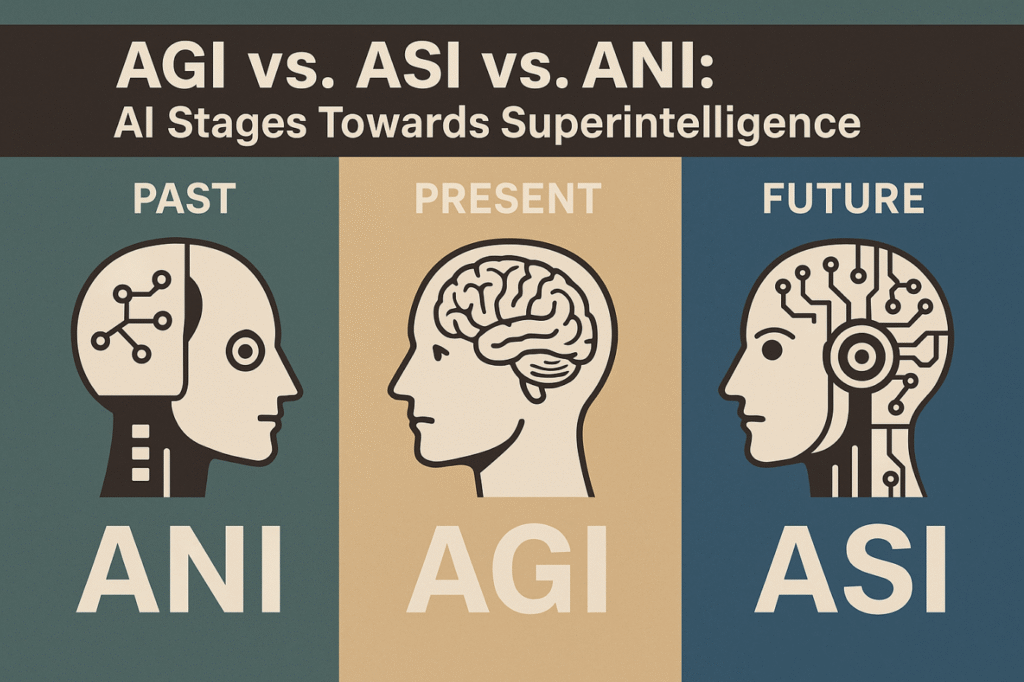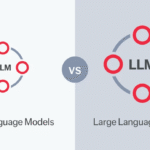Artificial intelligence (AI) and its related concepts often spark curiosity and confusion. You’ve probably heard terms like AGI, ASI, and even OI thrown around in tech discussions. But what do they mean, and how do they differ? Let’s break it down in a simple, conversational way to help you grasp these ideas.
Artificial Intelligence (AI): The Task-Specific Workhorse
AI refers to systems or machines designed to mimic human intelligence for specific tasks. Think of AI as a highly skilled specialist—it’s great at one thing but doesn’t venture far beyond its expertise. For example, AI powers chatbots like me (Grok, nice to meet you!), virtual assistants like Siri or Alexa, and recommendation algorithms on platforms like Netflix or Spotify. These systems excel at tasks like recognizing images, processing language, or predicting what movie you’ll love next. However, they’re limited to their programmed domains and lack the ability to reason broadly or adapt to entirely new challenges. AI is already all around us, making life more convenient, but it’s narrow in scope.
Artificial General Intelligence (AGI): The Human-Like Dream
AGI, or Artificial General Intelligence, is the next big leap—one we haven’t reached yet. Imagine an AI that’s not just a specialist but a jack-of-all-trades, capable of performing any intellectual task a human can do. AGI would learn, reason, and solve problems across diverse domains, from writing poetry to designing rockets, without needing specific programming for each task. It’s like giving a machine the cognitive flexibility of a human. While companies like xAI and OpenAI are working toward AGI, it remains a theoretical goal. No true AGI exists today, but it’s a hot topic in research, promising a future where machines could match human versatility.
Artificial Superintelligence (ASI): Beyond Human Limits
Now, let’s get futuristic with Artificial Superintelligence (ASI). This is the hypothetical stage where AI doesn’t just match human intelligence—it surpasses it in every way. ASI would outperform humans in creativity, problem-solving, emotional intelligence, and even physical tasks. Picture a machine that could solve global issues like climate change or invent technologies we can’t even dream of, potentially improving itself at an exponential rate. Sounds exciting, but also a bit daunting, right? ASI is purely speculative at this point, with no real-world examples. Thinkers like Nick Bostrom have explored its potential and risks, warning that ASI could reshape the world—or challenge humanity’s control over it.
Organic Intelligence (OI): The Biological Baseline
Finally, we have Organic Intelligence (OI), which is the intelligence you and I already have. OI refers to the natural intelligence of biological entities, primarily humans, driven by our brains and shaped by evolution. It’s what lets us reason, feel emotions, create art, and adapt to new situations. OI is incredibly versatile but limited by biology—our brains can only process so much, and learning takes time. Compared to potential AI systems, OI is slower to scale but deeply complex, blending cognition, emotion, and experience in ways machines can’t yet replicate. It’s the benchmark AI aims to emulate or exceed.
Why It Matters
Understanding these distinctions helps us see where technology is headed and how it compares to human capabilities. AI is already transforming industries, AGI could revolutionize how we solve problems, ASI might redefine existence itself, and OI reminds us of the unique strengths and limits of our natural intelligence. As we move forward, the interplay between these forms of intelligence will shape our world in profound ways.
Want to dive deeper into any of these? Let me know, and I can tailor more insights for your blog audience!
AI vs AGI vs ASI vs OI Comparison
| Aspect | AI (Artificial Intelligence) | AGI (Artificial General Intelligence) | ASI (Artificial Superintelligence) | OI (Organic Intelligence) |
|---|---|---|---|---|
| Definition | Computer systems that perform tasks typically requiring human intelligence | AI that matches human cognitive abilities across all domains | AI that significantly exceeds human intelligence in all areas | Intelligence found in biological organisms (humans, animals) |
| Scope | Narrow/specialized tasks | General problem-solving across all domains | Universal problem-solving with superhuman capability | Variable, from simple to highly complex |
| Current Status | Exists today (2025) | Theoretical/in development | Hypothetical future possibility | Exists naturally |
| Examples | ChatGPT, image recognition, chess engines, recommendation systems | Hypothetical human-level AI assistant | Hypothetical superintelligent system | Human brain, dolphin intelligence, octopus cognition |
| Capabilities | Specific domains (language, vision, games) | Human-level reasoning, learning, creativity | Far beyond human capacity in all areas | Learning, adaptation, consciousness, creativity |
| Learning | Task-specific training | General learning like humans | Self-improvement beyond human comprehension | Biological learning, experience-based |
| Flexibility | Limited to training domain | Highly flexible across domains | Ultimate flexibility and adaptability | High flexibility within biological constraints |
| Timeline | Already achieved | Potentially 2030s-2040s (estimates vary) | Potentially decades after AGI | Evolved over millions of years |
| Risks | Job displacement, bias, misuse | Existential risk if misaligned | Potentially catastrophic if misaligned | Limited by biological constraints |
| Control | Programmable and controllable | Challenging to control | Potentially uncontrollable | Self-directed, autonomous |
| Energy Efficiency | Variable, often high power consumption | Unknown, likely high initially | Unknown | Highly efficient (20 watts for human brain) |
| Consciousness | No consciousness | Potentially conscious | Potentially superintelligent consciousness | Consciousness present (especially in humans) |
| Substrate | Digital/silicon-based | Digital/silicon-based | Digital or other advanced substrates | Biological neural networks |
| Self-Improvement | Limited to retraining | Potential for self-modification | Recursive self-improvement | Limited biological adaptation |



